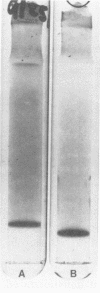Abstract
Antigen capable of eliciting delayed hypersensitivity reactions in the skin of sensitized guinea pigs could be extracted from Cryptococcus neoformans cells by stirring the cells from 3 to 5 days in concentrated urea or guanidine. Hydrolysis of urea to ammonia by cryptococcal urease accompanied urea extraction, but alkalinity appeared neither necessary nor sufficient for extraction. Antigen from live cells gave larger delayed skin reactions than did antigen from Formalin-killed cells. Peak skin test reactivity appeared to reside in protein-rich fraction having an elution volume on Sephadex G50 corresponding to a molecular weight of 10(4). Activity precipitated with half-saturated ammonium sulfate and could be detected in a single, narrow, rapidly migrating band on disc electrophoresis. Dialyzable proteinaceous antigen and high-molecular-weight, serologically active polysaccharide were present in the antigen, but not active in the delayed hypersensitivity reactions.
Full text
PDF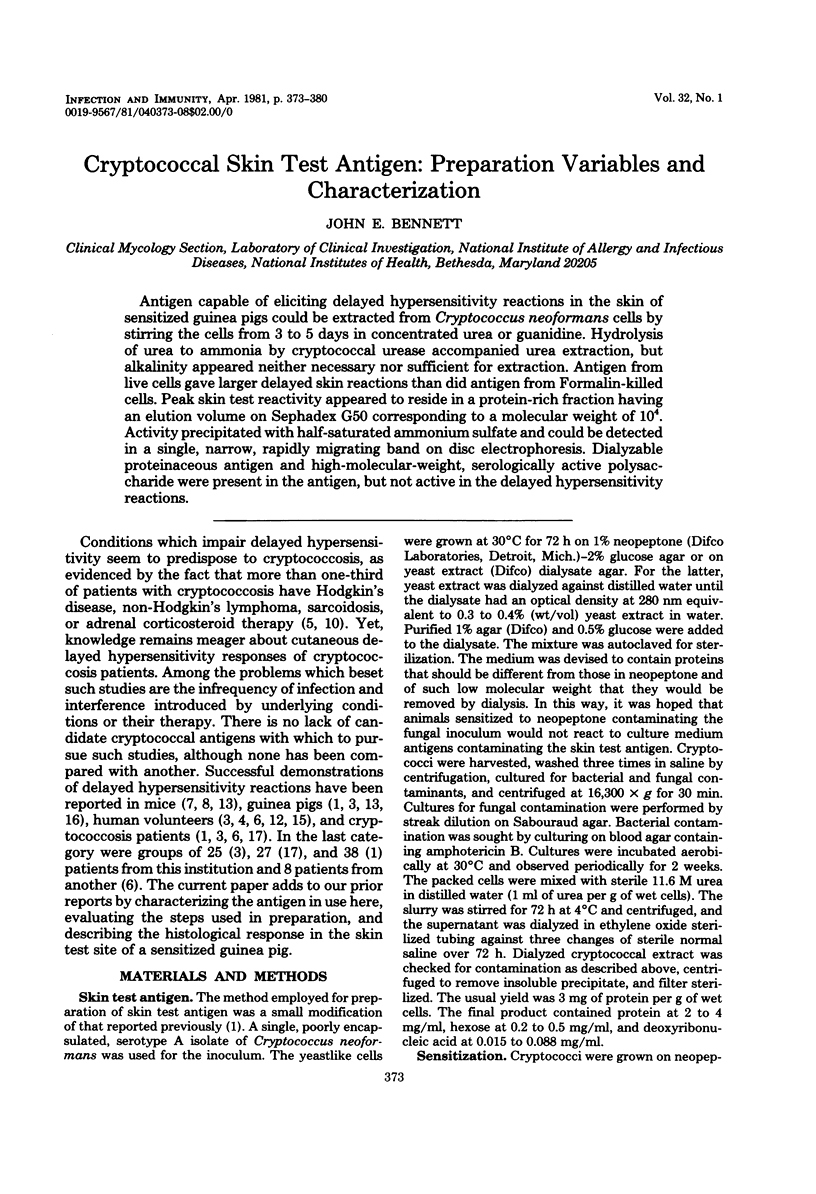
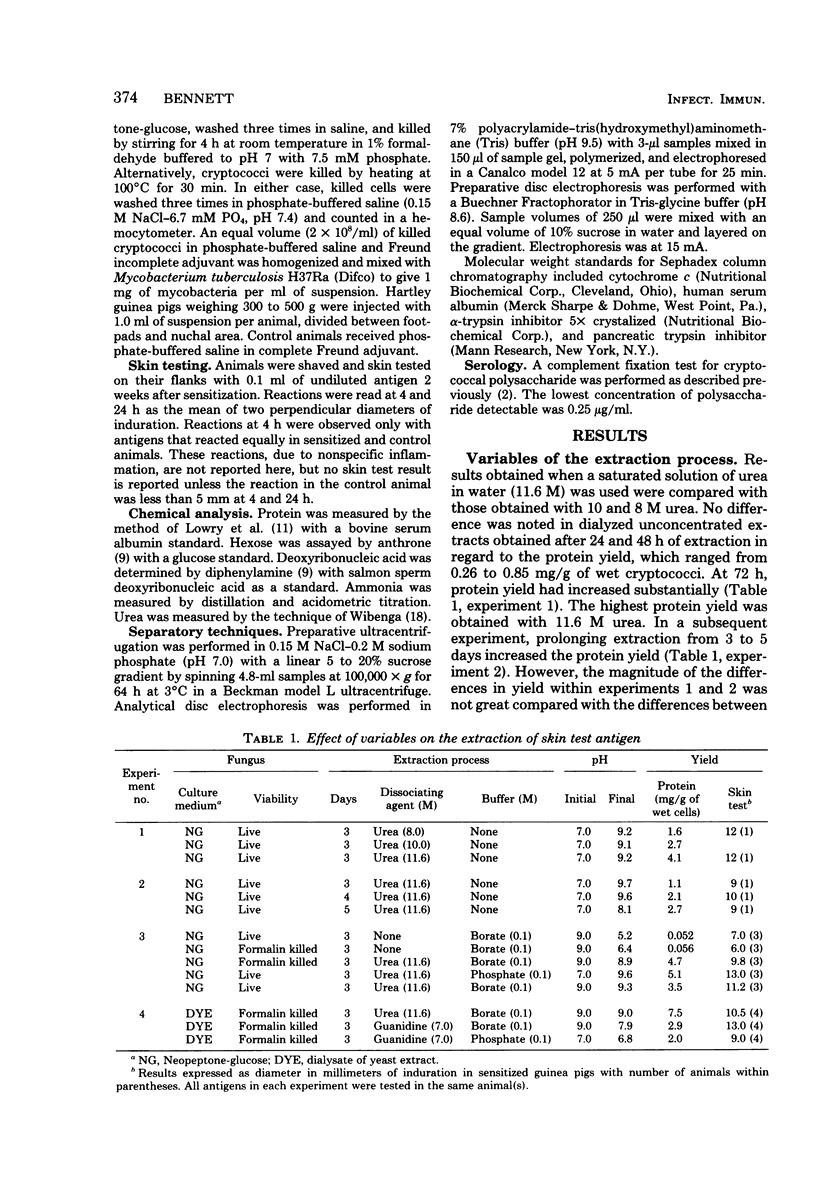
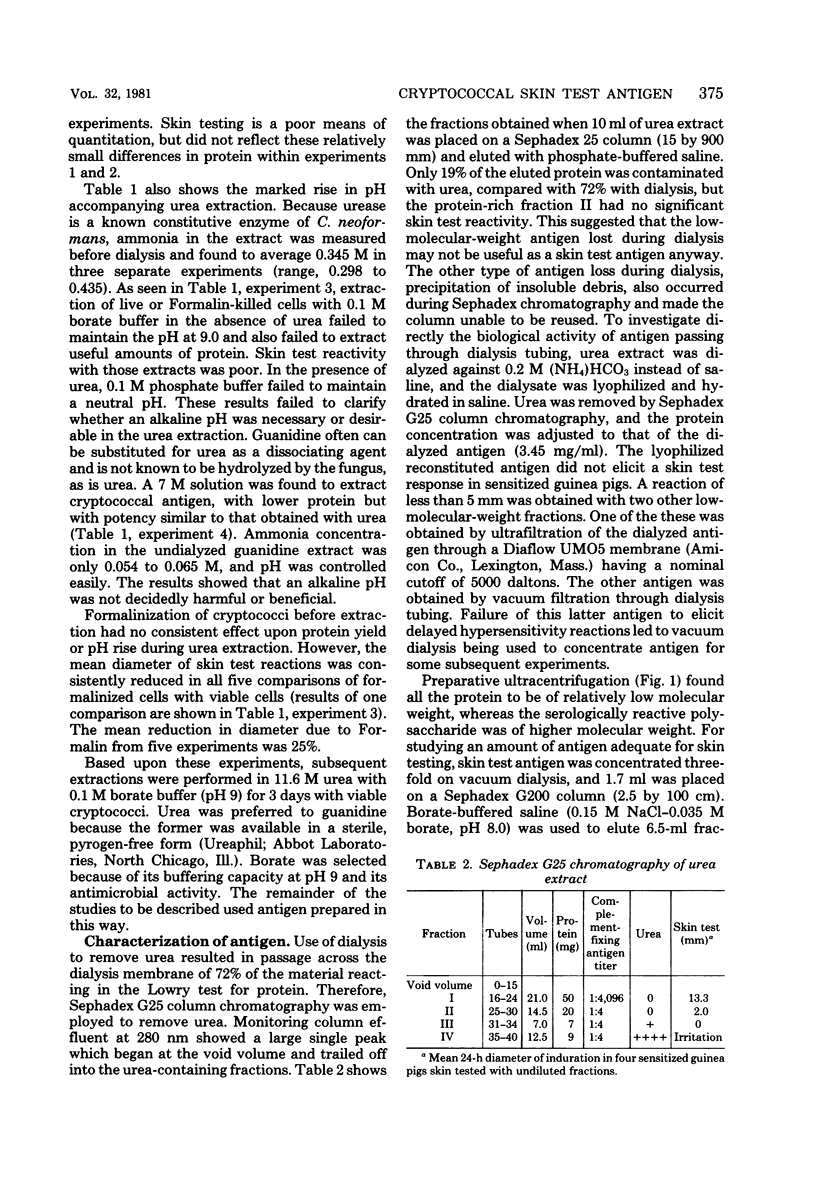
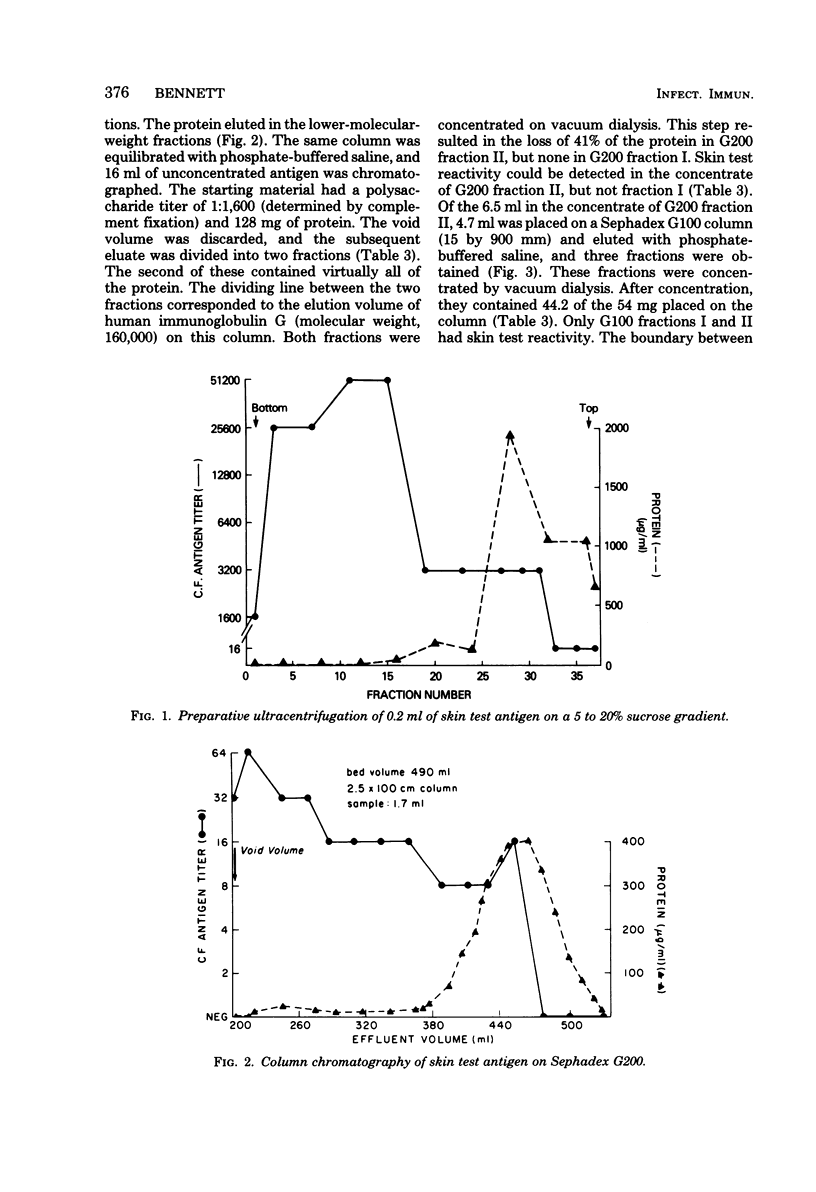
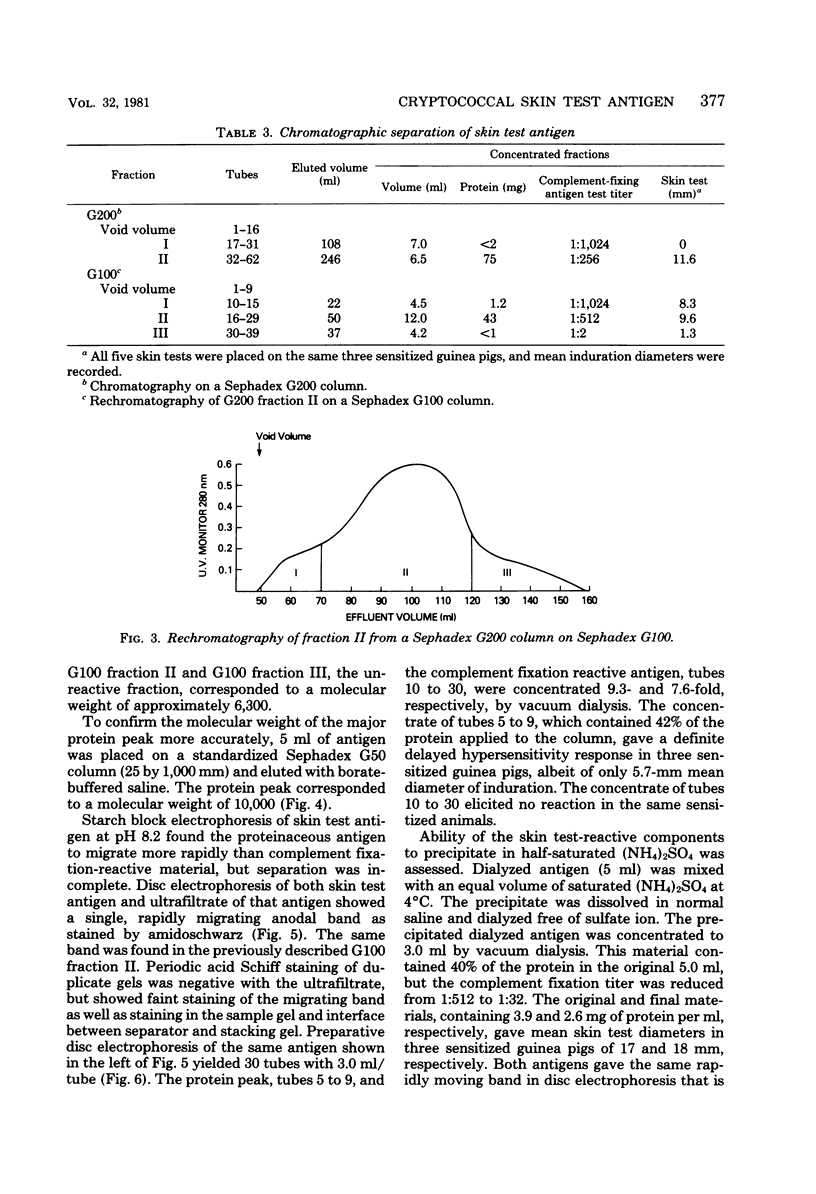
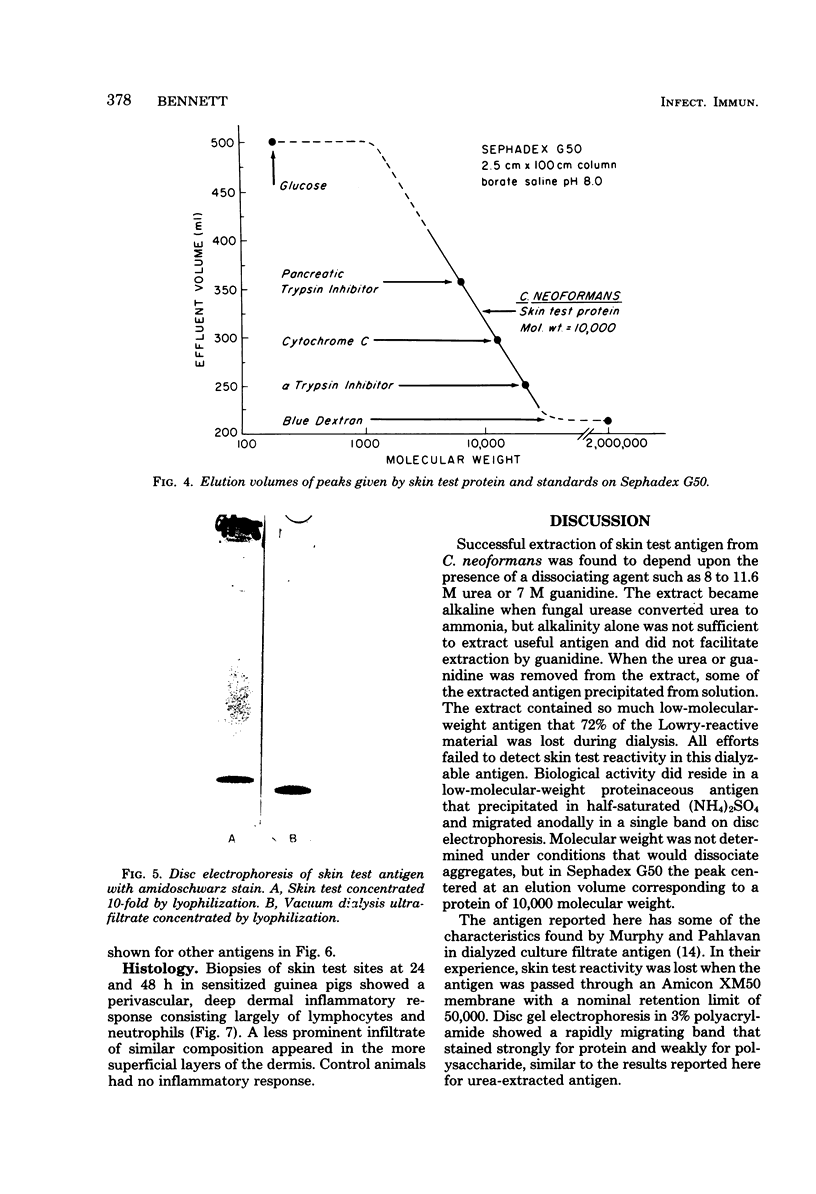
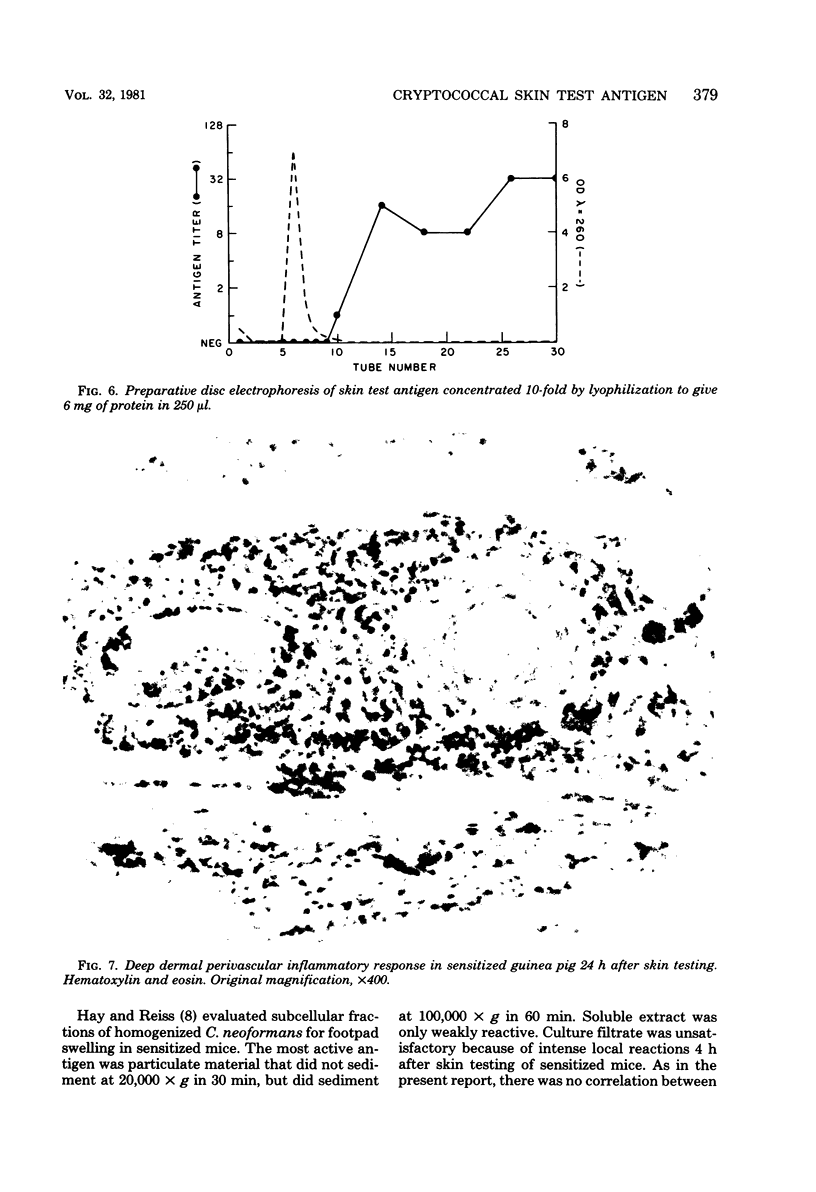
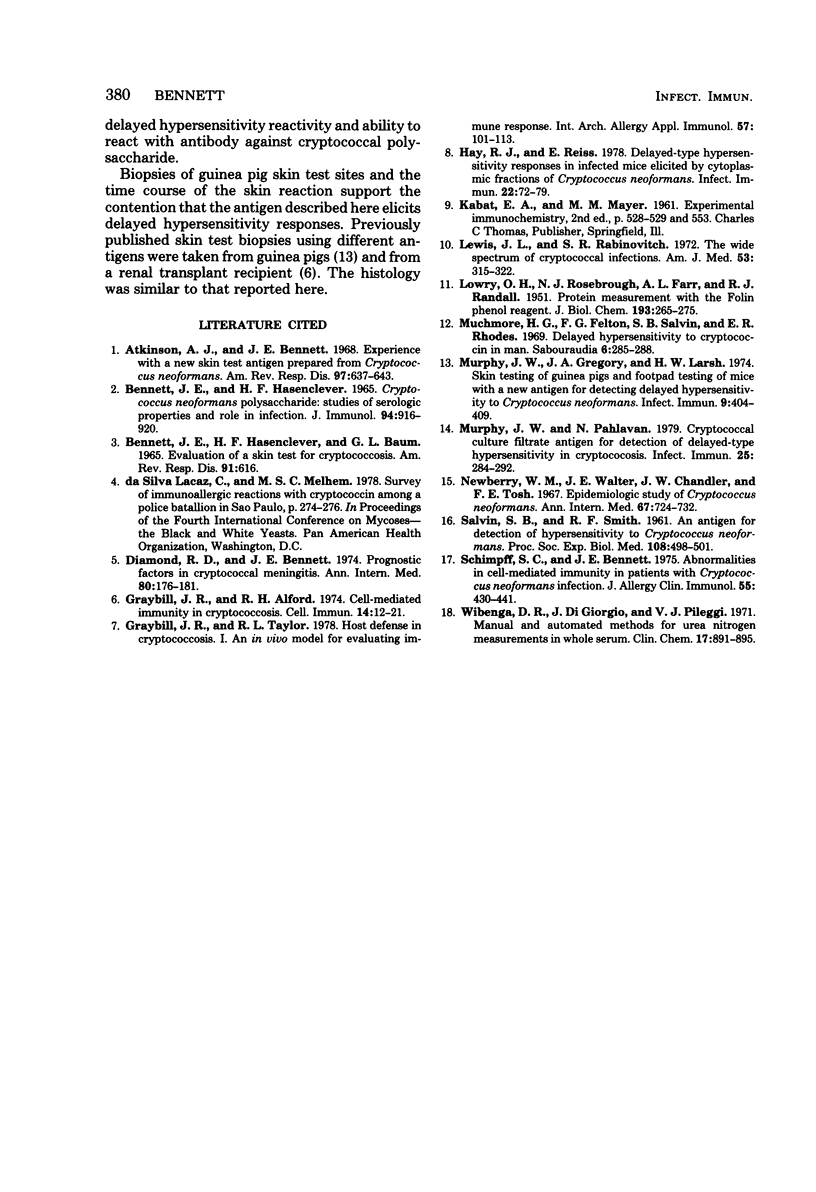
Images in this article
Selected References
These references are in PubMed. This may not be the complete list of references from this article.
- Atkinson A. J., Jr, Bennett J. E. Experience with a new skin test antigen prepared from Cryptococcus neoformans. Am Rev Respir Dis. 1968 Apr;97(4):637–643. doi: 10.1164/arrd.1968.97.4.637. [DOI] [PubMed] [Google Scholar]
- BENNETT J. E., HASENCLEVER H. F., BAUM G. L. EVALUATION OF A SKIN TEST FOR CRYPTOCOCCOSIS. Am Rev Respir Dis. 1965 Apr;91:616–616. doi: 10.1164/arrd.1965.91.4.616. [DOI] [PubMed] [Google Scholar]
- BENNETT J. E., HASENCLEVER H. F. CRYPTOCOCCUS NEOFORMANS POLYSACCHARIDE: STUDIES OF SEROLOGIC PROPERTIES AND ROLE IN INFECTION. J Immunol. 1965 Jun;94:916–920. [PubMed] [Google Scholar]
- Diamond R. D., Bennett J. E. Prognostic factors in cryptococcal meningitis. A study in 111 cases. Ann Intern Med. 1974 Feb;80(2):176–181. doi: 10.7326/0003-4819-80-2-176. [DOI] [PubMed] [Google Scholar]
- Graybill J. R., Alford R. H. Cell-mediated immunity in Cryptococcosis. Cell Immunol. 1974 Oct;14(1):12–21. doi: 10.1016/0008-8749(74)90164-6. [DOI] [PubMed] [Google Scholar]
- Graybill J. R., Taylor R. L. Host defense in cryptococcosis. I. An in vivo model for evaluating immune response. Int Arch Allergy Appl Immunol. 1978;57(2):101–113. [PubMed] [Google Scholar]
- Hay R. J., Reiss E. Delayed-type hypersensitivity responses in infected mice elicited by cytoplasmic fractions of Cryptococcus neoformans. Infect Immun. 1978 Oct;22(1):72–79. doi: 10.1128/iai.22.1.72-79.1978. [DOI] [PMC free article] [PubMed] [Google Scholar]
- LOWRY O. H., ROSEBROUGH N. J., FARR A. L., RANDALL R. J. Protein measurement with the Folin phenol reagent. J Biol Chem. 1951 Nov;193(1):265–275. [PubMed] [Google Scholar]
- Lewis J. L., Rabinovich S. The wide spectrum of cryptococcal infections. Am J Med. 1972 Sep;53(3):315–322. doi: 10.1016/0002-9343(72)90174-x. [DOI] [PubMed] [Google Scholar]
- Muchmore H. G., Felton F. G., Salvin S. B., Rhoades E. R. Delayed hypersensitivity to cryptococcin in man. Sabouraudia. 1968 Oct;6(4):285–288. doi: 10.1080/00362176885190561. [DOI] [PubMed] [Google Scholar]
- Murphy J. W., Gregory J. A., Larsh H. W. Skin testing of guinea pigs and footpad testing of mice with a new antigen for detecting delayed hypersensitivity to Cryptococcus neoformans. Infect Immun. 1974 Feb;9(2):404–409. doi: 10.1128/iai.9.2.404-409.1974. [DOI] [PMC free article] [PubMed] [Google Scholar]
- Murphy J. W., Pahlavan N. Cryptococcal culture filtrate antigen for detection of delayed-type hypersensitivity in cryptococcosis. Infect Immun. 1979 Jul;25(1):284–292. doi: 10.1128/iai.25.1.284-292.1979. [DOI] [PMC free article] [PubMed] [Google Scholar]
- Newberry W. M., Jr, Walter J. E., Chandler J. W., Jr, Tosh F. E. Epidemiologic study of Cryptococcus neoformans. Ann Intern Med. 1967 Oct;67(4):724–732. doi: 10.7326/0003-4819-67-4-724. [DOI] [PubMed] [Google Scholar]
- SALVIN S. B., SMITH R. F. An antigen for detection of hypersensitivity to Cryptococcus neoformans. Proc Soc Exp Biol Med. 1961 Nov;108:498–501. doi: 10.3181/00379727-108-26977. [DOI] [PubMed] [Google Scholar]
- Schimpff S. C., Bennett J. E. Abnormalities in cell-mediated immunity in patients with Cryptococcus neoformans infection. J Allergy Clin Immunol. 1975 Jun;55(6):430–441. doi: 10.1016/0091-6749(75)90082-2. [DOI] [PubMed] [Google Scholar]
- Wybenga D. R., Di Giorgio J., Pileggi V. J. Manual and automated methods for urea nitrogen measurement in whole serum. Clin Chem. 1971 Sep;17(9):891–895. [PubMed] [Google Scholar]



